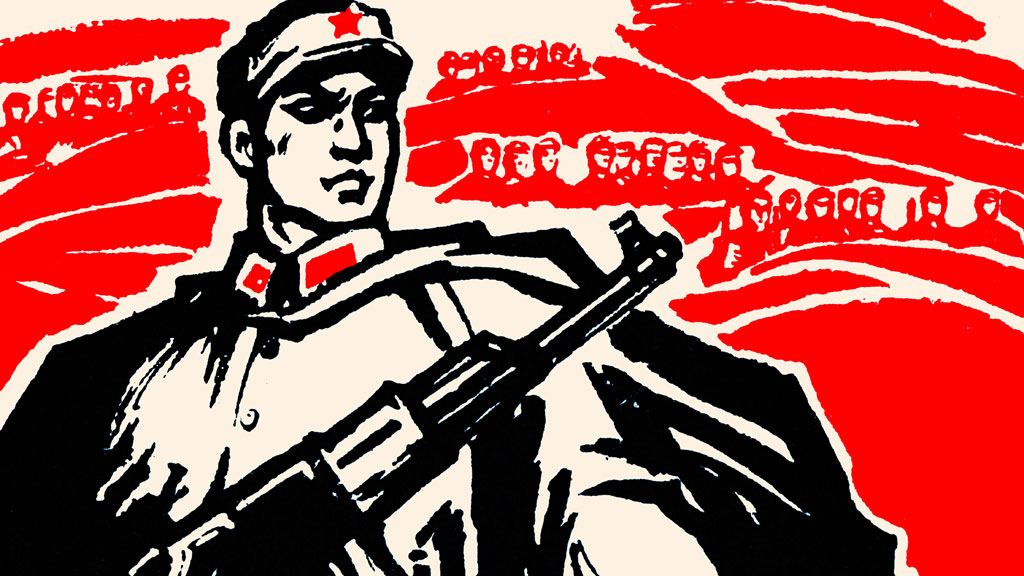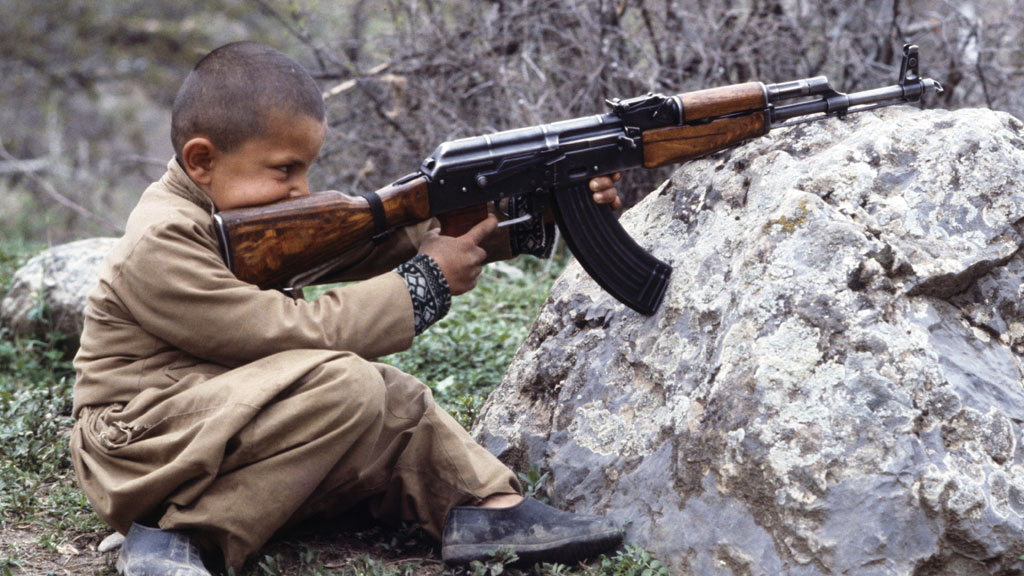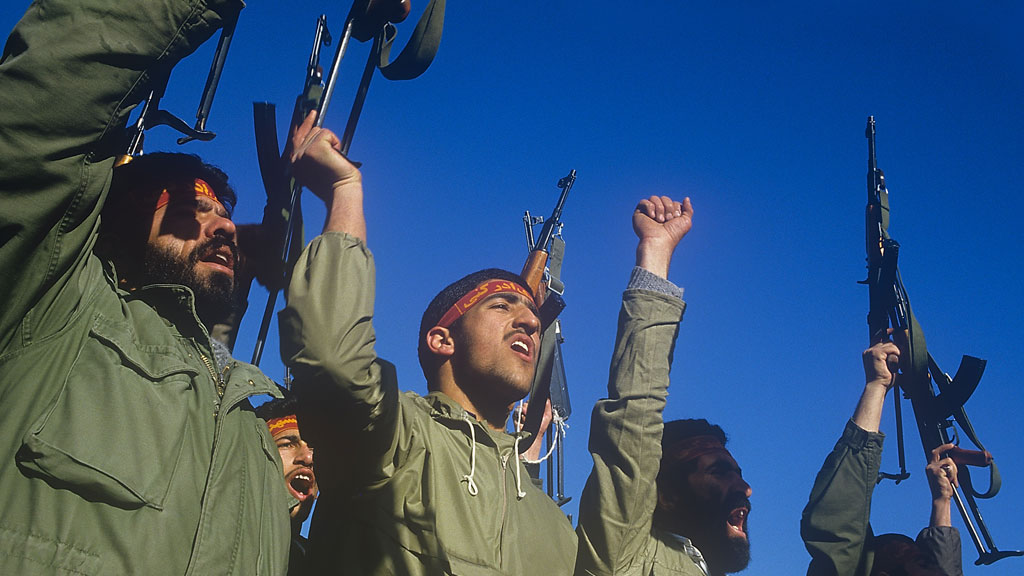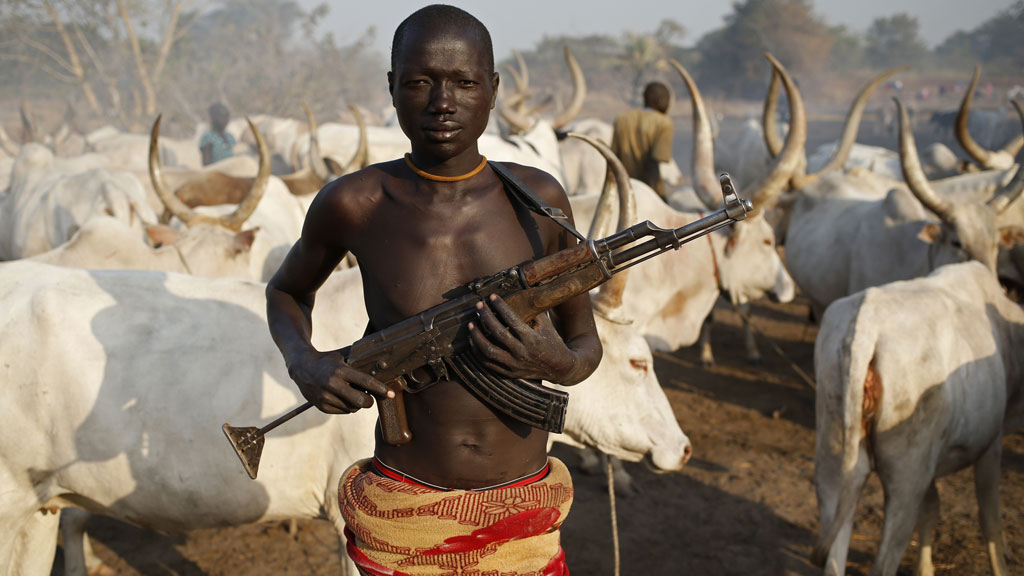Kalashnikov’s legacy? Global repression and rebellion
The AK-47 rifle, the brainchild of Mikhail Kalashnikov who died yesterday, was first used by Soviet Russia to suppress rebellious east European states, but soon became the freedom fighter’s creed.

The lightweight, durable and plentiful AK-47 has been the weapon of choice for militias, freedom movements and criminals for decades in dozens of developing countries.
First put into service with Russian forces in 1949, the rifle has played such a crucial part in revolutions and power struggles the world over that it has become a potent symbol – to the extent that it is depicted in the flag of Hezbollah, the emblem of Mozambique and the coats of arms of Burkina Faso, East Timor and Zimbabwe.
About 100 million AK-47 rifles are estimated to be in global circulation, from South America to Africa and even China. It is so light that it can easily be used by children.

The Kalashnikov was originally meant to be a tool for Russia’s national defence but was first used to crush freedom movements in the USSR’s satellite states. Russia’s decision to license the rifle’s production opened the way for the manufacture of millions of illicit copies.
Global spread
Unchecked manufacture and stockpiling in eastern Europe led to the production of millions of AK-47s.
But as the fragile governments of eastern Europe fell apart, they lost control of their guns and they flowed into warzones around the globe.
The AK-47 first proved its worth in the Vietnam war, when US troops found that it was superior to their M16s which jammed easily in harsh conditions, and it has now become synonymous with civil war and internal strife, especially in developing countries.
It has become part of the fabric of global conflict, and despite its inventor’s unwillingness to express remorse at the contribution his rifle has made to worldwide unrest, the rifle has played its part in the death of 500,000 people each year thanks to small arms.
Small arms in conflict
According to the UN, there are about 640 million small arms in the world, meaning that the AK-47 comprises just under one sixth of the world’s small arms stockpile.

Small arms and light weapons are responsible for 60-90 per cent of all conflict victims killed with firearms.
More than 1,000 companies in about 100 countries are involved in some aspect of small arms production, according to the UN, with “significant producers” in around 30 countries. About 7.5 to 8 million small arms are being produced each year, according to conservative estimates.
The evidence strongly indicates that many of the ideas credited to Mikhail Kalashnikov do not appear to have been his own C J Chivers
Licensed production is now a common feature globally, and craft production – carried out in private workshops – is practiced in some regions but remains largely untracked.
Stockpile management and control “is one of the most acute small arms problems”, says the UN.
“‘Leaking’ government stockpiles are prominent sources of illegal small arms in circulation,” it adds. “Generally, surplus and obsolete weapons are better destroyed than stored. In post conflict settings, the immediate destruction of surplus weapons and ammunition removes possible fuel for new instability.”
True inventor?
But ironically, despite his apparent connection to thousands of conflict deaths, Mikhail Kalashnikov may not be the true “inventor” of the world-renowned rifle.
According to C J Chivers, whose book Gun charts the rise of the AK-47, the Soviets perpetuated Kalashnikov’s myth despite a wealth of other inspirations for the rifle as it came to be.

“The evidence strongly indicates that many of the ideas credited to Mikhail Kalashnikov do not appear to have been his own, or were outright claimed by others in his circle,” Chivers says.
“What you find is that Kalashnikov’s own account shifts in the telling over the years, and that much of what he said was challenged by important peers who were there as the weapon took its shape.
“Ultimately, the conclusion is inescapable: the automatic Kalashnikov, his namesake, resulted not from one man’s epiphany, but from design convergence in a massive, state-directed pursuit.”
But the AK-47’s significance is unmistakable: what started out as a tool of Russian repression has fuelled armed rebellion and global conflict for decades, a legacy that is likely to endure for some years yet.